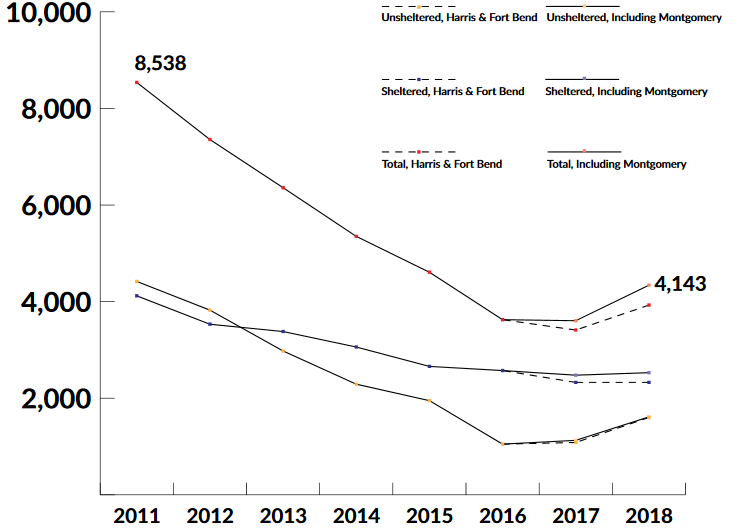Imagine Dallas, is the phrase that I kept thinking about, as we conducted the annual homeless count, two weeks ago, the night of January 24, 2019. Imagine Dallas, without homelessness.
Successfully recruiting over 1,550 volunteers to go out into the cold, find our homeless friends, and interview them, one by one, is no small feat. It gives us, at the Metro Dallas Homeless Alliance, a sense of pride to be able to pull this off, year after year. And, yet, what if we didn’t have to, because Dallas had ended homelessness?
 Volunteer training for the recent Homeless Count, January 24, 2019, at First United Methodist Church Dallas
Volunteer training for the recent Homeless Count, January 24, 2019, at First United Methodist Church Dallas
Some readers might scoff. We always had homelessness, and we always will, they might say. And yet, if I were to tell you 200 years ago that we would eradicate slavery, 100 years ago that we would eradicate segregation, 50 years ago that women would have full equality under the law, would those not sound like more fantastical predictions?
We also know exactly what to do to achieve this goal. 15-20 years of careful social science research have told us what we should have known all along: You end a person’s homelessness by housing them, and adding on case management services, to the degree the person needs them.
Dallas, specifically, more than other large cities, is well positioned to make this a reality. Dallas and Collin Counties’ general populations clocks in at 3,587,600, according to the U.S. Census Bureau. The homeless population numbers about 4,100 at any one time, with around that 2-3 times that number experiencing an episode of homelessness sometime during the year.
These numbers, though troubling and shameful, are not insurmountable. The data shows that communities of similar sizes, indeed communities larger than ours with larger homeless populations, like Houston, lowered the numbers of their homeless populations, year after year, through 2016/2017. It can and is being done.
 Houston Homeless Count trends (Courtesy of the Houston based Coalition for the Homeless)
Houston Homeless Count trends (Courtesy of the Houston based Coalition for the Homeless)
Our community’s dynamics make it is extremely well positioned to reach this goal. Homeless services in Dallas and Collin Counties have come together to form a genuine homeless response system. Partners work together, following the principles of collective impact. Service providers no longer ask, “Is this person a good fit for our specific program?” Instead they ask, “What solutions does this person need to end their homelessness quickly and permanently?”
Homelessness is top of mind in the public discourse. This is true on the governmental level, from a mayoral commission in 2016, through the establishment of the City of Dallas’ Office of Homeless Solutions, to candidates for mayor and city council vowing to address this issue.
This is true on the civic level, from non-profits like United Way of Metropolitan Dallas making increasing investments in ending homelessness, through faith leaders like the members of Faith Forward Dallas making homelessness one of their primary focuses for action, to for profit corporations like AT&T, with their Believe Dallas initiative, joining the fight to solve this problem, which is, quite literally, on their door step.
The City of Dallas, through its Office of Homeless Solutions, is taking concrete steps to address the mismatch of supply and demand. It has increased shelter capacity. It is making investments in enhancing the homeless response system itself. It is on the cusp of launching a Landlord Subsidized Leasing Program, which will help 100 homeless individuals and families find housing, by providing a variety of supports for these renters and for landlords who will work with them. Finally, in partnership with developers, leveraging $20 million approved in a 2017 bond election, it will increase the supply of housing for the homeless by about 1,000 units.
Dallas can sustain this momentum. We, at the Metro Dallas Homeless Alliance, along with our partners, will continue to improve the homeless response system, to the point that it is the best in the country. Dallas, as a community, through a combination of governmental and civic action, can ensure that it has enough housing units to house those who are homeless. If we take those simple steps and doggedly follow them, we will end homelessness, in this, our home, Dallas.






